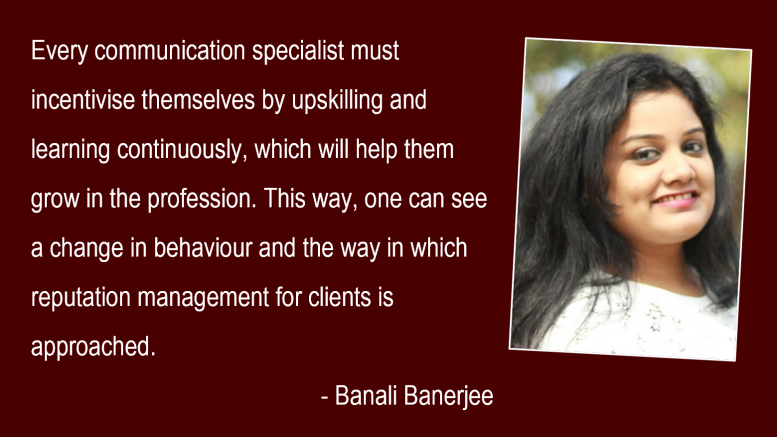Taking inspiration from the Takshashila Institution’s Public Policy course on “Eight things Government Do” or in simple words — Eight actions Government takes during a policy making process, here is my take on the Eight things PR professionals must do in order to excel in their profession.
- Do Nothing— This is most prevalent while managing reputation during a crisis. Often we feel, we are bound to recommend certain actionable strategies to the clients in response to a crisis development. But predominantly, PR professionals should first understand the client’s stance on whether they have anything substantiating to either acknowledge or refute the situation. After analysing, in most circumstances, it is the job of the consultants to evaluate if this can mitigate without any intervention or vice versa. For example, many a times there are certain media queries based out of speculation and the clients do not want to acknowledge, the best way is to do nothing about it as the story may not hold any merit.
- Engage in Rhetoric— The next step above doing nothing would be engaging in rhetoric. This means that there need not be any campaigns executed on any government or regulatory actions that directly impact the client’s sector. But instead, a simple acknowledgement or signaling the fact that the company is open to such initiatives will help them to authenticate their commitment towards the sector. It is the job of the consultant to propose these suggestions to increase their brand’s presence in the industry. Recently, a lot of fintech companies voiced their opinions on the digital lending guidelines issued by the RBI.
- Nudge — Nudge simply means, change perception without changing the incentives. This is where PR Pros can suggest ideas that the client wants to promote to its stakeholders. For instance, if you handle a hospital brand and they want to promote organ donation. You can constantly nudge people either through marketing and social media campaigns or by organising awareness camps in colleges, offices, etc. In this case, one of the prominent ways of nudging could be putting placeholders outside emergency units, operation theatres, and ICUs.
- Umpire— Here, umpiring means enforcing rules to implement a policy action. While PR professionals may not exactly be able to replicate this point of action, they can definitely find a way out that works for all the concerned parties, i.e., the PR consultancy, clients, and journalists. Our job is to pitch the journalists about the story ideas that will be impactful to the readers. One of the ways can be shaping our workspaces into newsrooms. These days, a lot of PR consultancies are hiring journalists to create a hybrid model that marries PR, content, and strategic communications. Professionals can make the most of this arrangement and be in a commanding position with valuable, newsworthy information that will boost client credibility.
- Marginally change incentives— In public policy parlance, this means shifting behaviour at the margin through some incentives. To make it relatable in the PR profession, every communication specialist must incentivise themselves by upskilling and learning continuously, which will help them grow in the industry. This way, we can see a change in our behaviour and the way we approach reputation management for our clients.
- Drastically change incentives — This can be done by PR consultancies by imposing their employees to opt for select methodology for client servicing. An example could be an approach for low ticket clients vs high paying clients. This way, PR consultants need to maneuver their strategy — limiting the proactivity and reducing the scope of work.
- Change/Reassign Ownership— In public policy terms, this means either changing or reassigning the public-private partnership. To make it relevant in PR, deciding on when the consultancy or the client should respond to media queries can be an example of changing or reassigning ownership. There are multiple cases where corporate communication team holds more value for a journalist than a consultant from a PR consultancy, despite good media relations.
- Do-It-Yourself— This is the final step, wherein the communication specialists should be able to deal with all the consequences, positive or negative, all by themselves. They need to be confident and practical to handle the clients independently without involvement from other people. PR professionals must aim to reach this position to make themselves ‘Aatmanirbhar.’
The above-suggested actions may not directly link to the exact meaning that is referred to in public policy. But I have tried to relate every term that can be of use to the PR specialists while managing communications for their clients.
The views and opinions published here belong to the author and do not necessarily reflect the views and opinions of the publisher.



Be the first to comment on "Eight Things PR Professionals Must Do"